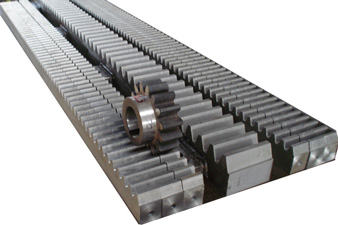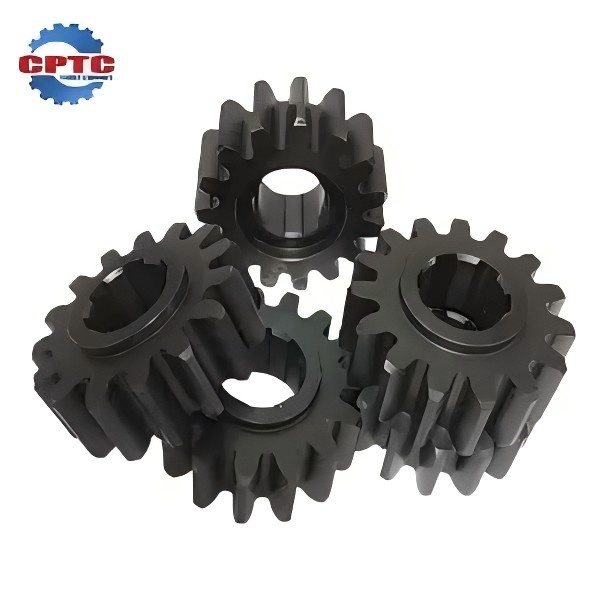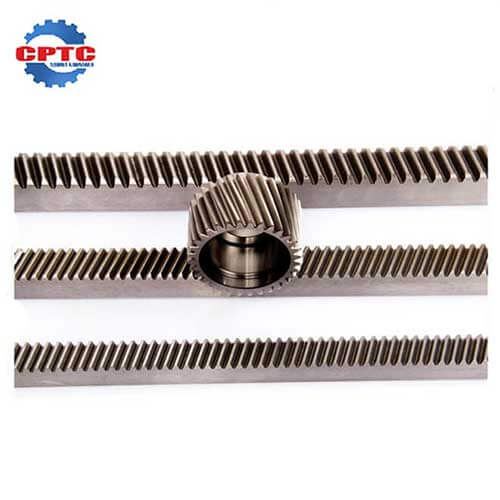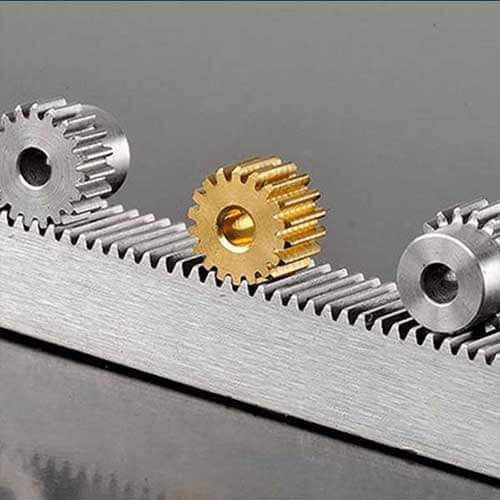In the modern world of construction, safety and efficiency come first. High-rise buildings and tall structures rely heavily on construction hoists, which are the pillars of vertical labor and material transportation. Among all the parts that make up a construction hoist, the gear and rack system or simply referred to as the construction hoist rack and pinion is a major contributor to ensuring efficient operations.
When high-quality gear and rack are used, the hoist provides smooth, safe, and efficient operation. Low-quality components, however, can result in downtime, recurring breakdowns, and even safety risks. The following article delves into the reasons why purchasing high-quality construction hoist gear and rack is essential, and offers background information on materials, standards, maintenance, and supplier selection.

Understanding Gear and Rack: From Materials to Standards
The rack and pinion system of the construction hoist is a mechanical drive device that converts rotational motion into linear motion. Gears are fundamental components in mechanical transmission, transmitting power and torque through the meshing of teeth with each other. The rack is a special type of gear, which is in the shape of a long bar. The pinion meshes with the rack (a straight bar with teeth), enabling the hoist cage to move up and down smoothly along the mast section.
Common Materials
The material of the rack and pinion has a significant impact on its performance and lifespan. Common materials for gear racks include carbon steel, alloy steel, stainless steel, etc. When choosing materials, factors such as their strength, hardness, wear resistance, corrosion resistance and cost need to be taken into consideration. In addition, for special application environments such as high temperature, low temperature, and strong corrosion, materials with corresponding properties also need to be selected.
- Alloy steel: Alloy steel is renowned for its strength and durability and is the most widely used material for gears and racks of construction hoists.
- Carbon steel (such as 45# steel) : It has good mechanical processing performance and price advantage, but it requires additional treatment to enhance wear resistance.
- Cast iron: Due to its brittleness, it is not very common in modern elevators, but it is occasionally used in economical applications.
Manufacturing and Technology
The durability of the rack and pinion system largely depends on the manufacturing process. The key steps include:
- Forging or precision machining: Provides strength and accuracy.
- Heat treatment (quenching and tempering) : Enhance surface hardness and wear resistance.
- Surface grinding or polishing: Ensure smooth operation and minimize vibration.
Standards and Specifications
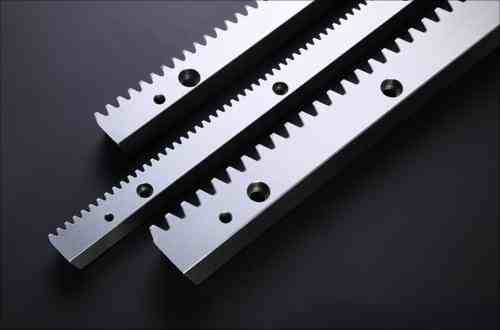
The gears and racks of construction hoists follow specific standards and are usually defined by the module (M), which is the basic parameter representing the size of the tooth profile and determines the size and strength of the gears and racks. The commonly used modules of construction hoists are M8, M10 and M12. It is crucial to ensure compatibility with the design of the lift, as mismatched specifications can lead to operational issues and accelerate wear and tear.
Related Articles: The Complete Guide to Understanding Gears and Racks
The Role of Gear and Rack in a Construction Hoist
The rack and pinion system is the core of the transmission mechanism of the construction hoist. It ensures that the lifting cage moves vertically along the mast, thus safely and efficiently transporting people and heavy objects.
Unlike cable-driven lifts that rely on pulleys and counterweights, rack and pinion systems are specifically designed to cope with harsh construction environments. It offers:
- Direct power transmission: Offers high load capacity and stability.
- Controllable speed and accuracy: Working on high-rise buildings is of vital importance.
- Enhanced safety: Built-in mechanical reliability can reduce the risk of sudden failures.
Therefore, most modern construction hoists are equipped with a construction hoist rack and pinion system. Their efficiency directly depends on the quality of the gear rack used.
Why High-Quality Gear and Rack Matter for Your Construction Hoist
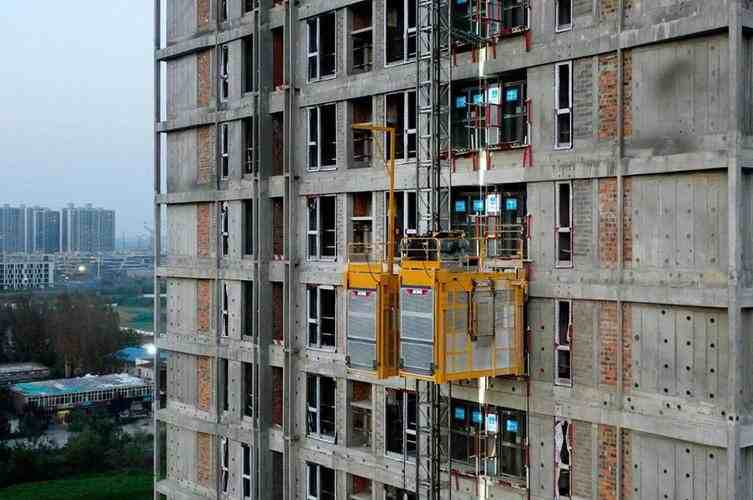
In the operation system of elevators, gear transmission plays a crucial role. It is not only the hub for power transmission, but also a key component that determines the smoothness, safety and service life of equipment operation. Whether it is a freight lift used in high-rise buildings or a vertical conveying system applied in industrial production lines, the core power chain relies on the precise meshing and efficient transmission of gear mechanisms.
- Enhance security
Safety at the construction site cannot be compromised. High-quality gears and racks ensure precise meshing between teeth, preventing slippage or sudden failure. This reduces the risk of accidents and ensures the safety of operators and passengers.
- Smooth operation
The excellent gear and rack system ensures smoother operation. Reduce vibration and maintain a stable speed to make the working environment safer and more comfortable, especially in high-rise projects where unstable factors may cause danger.
- Longer service life
The combination of high-quality alloy steel and advanced heat treatment processes endows the rack and pinion with outstanding wear resistance. This means fewer replacements, less downtime, and long-term cost savings.
- Lower noise and vibration
High-quality processing and finishing reduce the operating noise. This not only improves the working environment but also minimizes the pressure on other hoist components to the greatest extent.
- Long-term cost-effectiveness
Although the initial cost of high-quality gears and racks may be higher, in the long run, their reduced maintenance costs, longer service life and higher safety make them a more economical choice.
Common Problems with Low-Quality Gear and Rack
The use of inferior gears and racks for construction hoists will bring many challenges:
- Rapid wear: Poor-quality materials wear out rapidly, leading to frequent replacement and increased maintenance costs.
- Poor meshing and slippage: Low processing accuracy can lead to improper tooth meshing, thereby causing vibration, noise and potential safety hazards.
- Decreased load capacity: Poor-quality materials may not be able to support heavy loads, thereby limiting the efficiency of the lift.
- Frequent shutdowns: Frequent maintenance and replacement will lead to extended downtime, delayed construction progress and increased project costs.
How to Choose the Right Gear and Rack for Your Hoist?
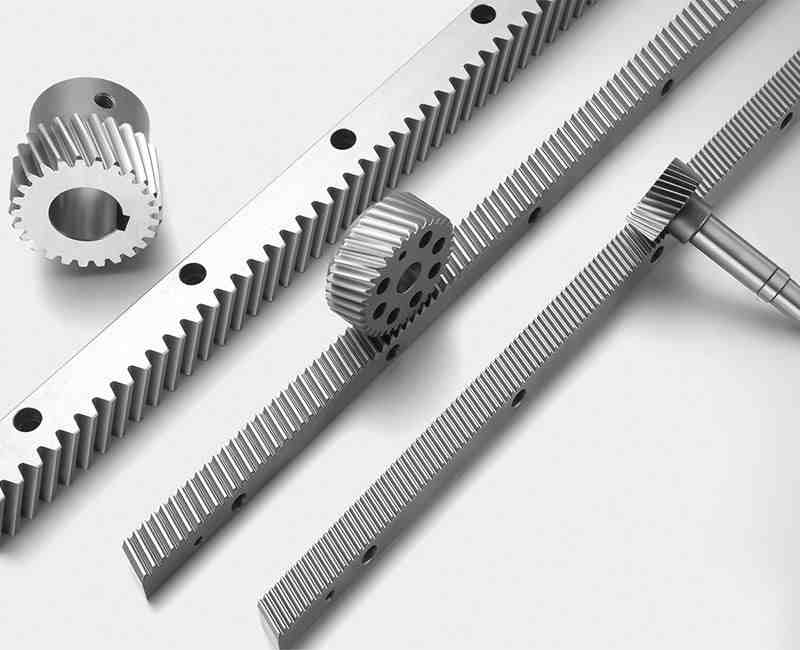
Gear selection is not merely a matter of size matching, but a comprehensive judgment based on multiple parameters such as load characteristics, operating frequency, and environmental conditions.
Load Characteristics
- Evaluate both peak load (start-up, braking, full-load) and continuous working load.
- Ensure gear module, tooth count, and material strength can withstand actual operating conditions.
- For frequent start/stop applications, prefer alloy steel gears with high fatigue strength and moderate hardness.
Transmission Ratio
- Affects elevator running speed and motor matching.
- Too high ratio → high motor speed, more energy consumption and wear.
- Too low ratio → insufficient output torque, reduced lifting efficiency.
- Must accurately calculate input-output speed ratio and align with reducer structure.
Gear Precision
High-precision gears reduce meshing noise, vibration, and improve ride comfort and operational smoothness.
Environmental Conditions
- In humid, dusty, or corrosive environments, use corrosion-resistant materials or apply protective surface treatments (e.g., coating, spraying).
- Match lubrication method to working conditions:
- Closed gearboxes → oil bath lubrication.
- Open/semi-closed structures → grease lubrication (better contamination protection).
Maintenance Tips for Gear and Rack
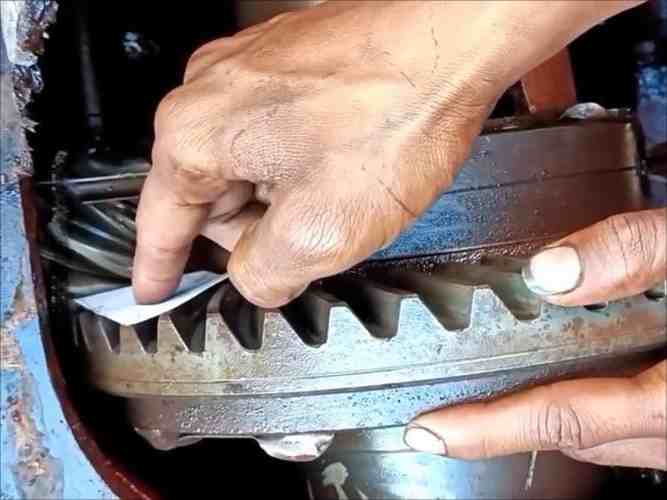
Regular maintenance is an effective means to extend the service life of gear systems. Establish a clear maintenance cycle table, covering lubrication, cleaning, inspection and record-keeping, etc.
Lubrication: The selection of lubricants should be matched with the material of the gears, load and speed. Regularly change the lubricating oil or grease to prevent a decline in lubrication performance due to aging, contamination or emulsification of the oil. When replacing, the old oil should be thoroughly removed to prevent the mixture of new and old oil from affecting performance.
Inspection: During routine routine checks, pay attention to whether there is any leakage, abnormal temperature rise or abnormal noise in the gearbox. Early fault signals such as pitting on the tooth surface, broken teeth or bearing damage can be captured through stethoscopes or vibration analyzers. Once any abnormality is detected, the machine should be stopped immediately for inspection to prevent minor issues from evolving into major malfunctions. Regular disassembly and inspection can directly assess the wear condition of the tooth surface, measure the change in tooth thickness, and determine whether repair or replacement is needed.
Replacement: Replace severely worn or damaged components in a timely manner to avoid potential safety hazards.
Maintenance records: The completeness of maintenance records helps to trace the changing trends of equipment status. Record in detail each lubrication time, oil type, problems found during inspection and their handling measures to provide data support for subsequent maintenance decisions. By integrating historical data, the remaining lifespan of key components can be predicted, enabling a shift from passive maintenance to predictive maintenance.
Why Choose CPTC Gear and Rack?
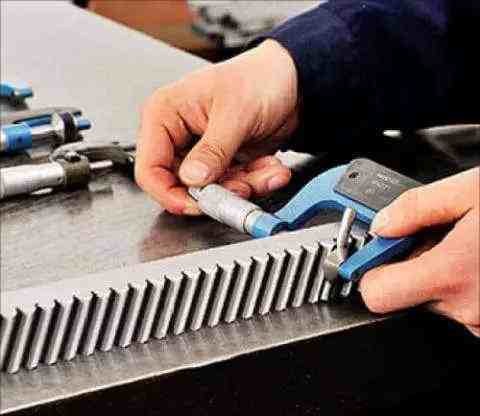
High-quality gears for construction cranes not only enhance safety and reliability, but also extend service life and reduce long-term costs. Choose a trusted supplier like CPTC to ensure you get first-class components and that your project proceeds smoothly and safely.
- Self-owned manufacturing plant: CPTC has its own rack production plant and strictly controls quality and consistency.
- Comprehensive solutions: From high-quality rack and pinion to complete pinion assemblies, CPTC offers end-to-end solutions customized according to customer needs.
- Rich inventory and customized services: We always have a variety of standard racks and gears in stock and can customize designs according to customer drawings.
- Customer commitment: The CPTC team is dedicated to helping customers find the ideal gear and rack solutions to ensure safe, efficient and reliable lift performance.
If you have any questions or custom orders, please contact CPTC – we will do our best to select the perfect gears and racks for your construction hoist.
Related Products
Construction Hoist Gear Rack
Fast delivery, ready stock
Complete Specifications
Customized Racks
Construction Hoist Pinion
Fast delivery, ready stock
Complete Specifications
Custom Pinion
Gear Rack Used for Tool Machine
Complete range of specifications
Customizable rack
High Precision Gear Rack
Fast shipping, in stock
Complete range…

